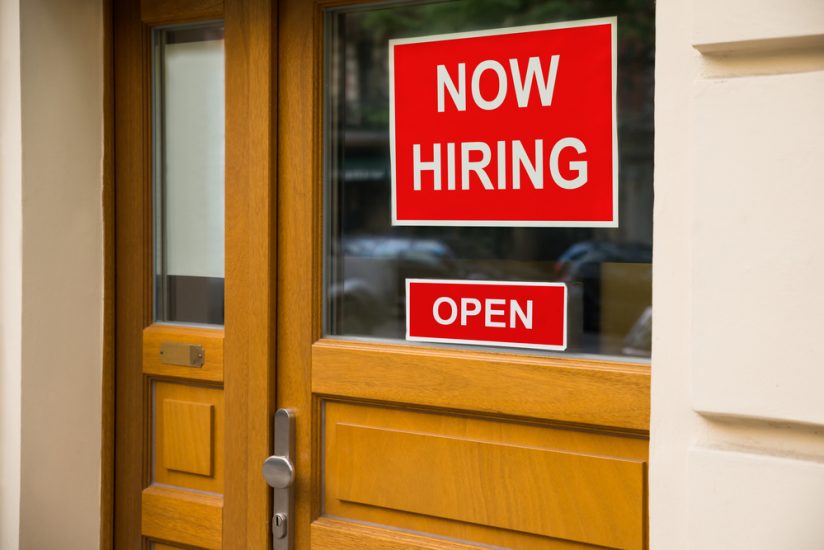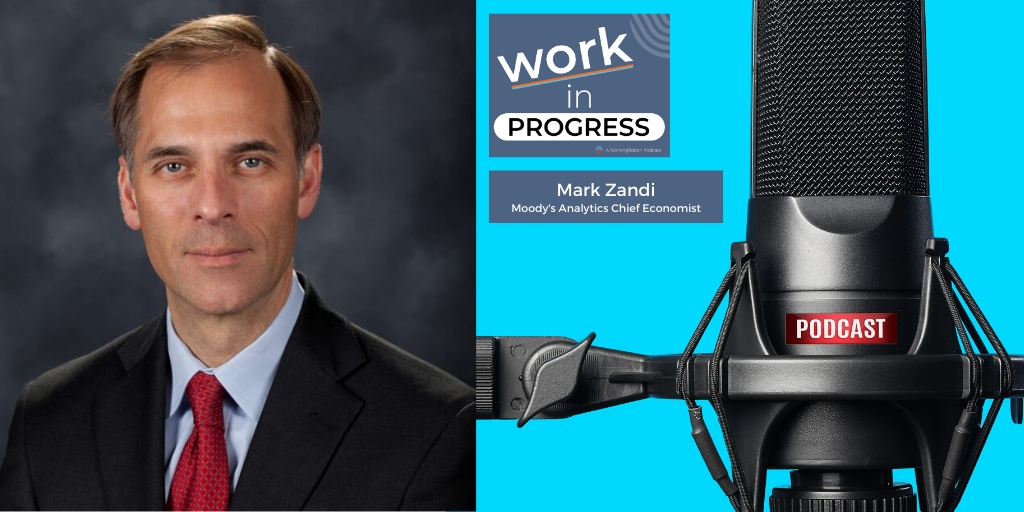WorkingNation welcomes financial journalist Ramona Schindelheim. She is a Los Angeles-based writer and media consultant who brings her expertise in business reporting to our platform over from her award-winning work in network news for CNBC and ABC News.

Strong Job Growth in June
Job growth across the country was strong and broad-based in June, with the economy adding a bigger-than-expected 222,000 jobs for the month, according to the U.S. Labor Department report released this morning. The unemployment rate ticked up slightly from 4.3% in May to 4.4% in June, but is still close to a 16-year-low.
The government report says job growth was stronger than first reported for the months of April and May. The number of jobs added for April was revised up from 174,000 to 207,000. For June, the number was revised up from 138,000 to 152,000.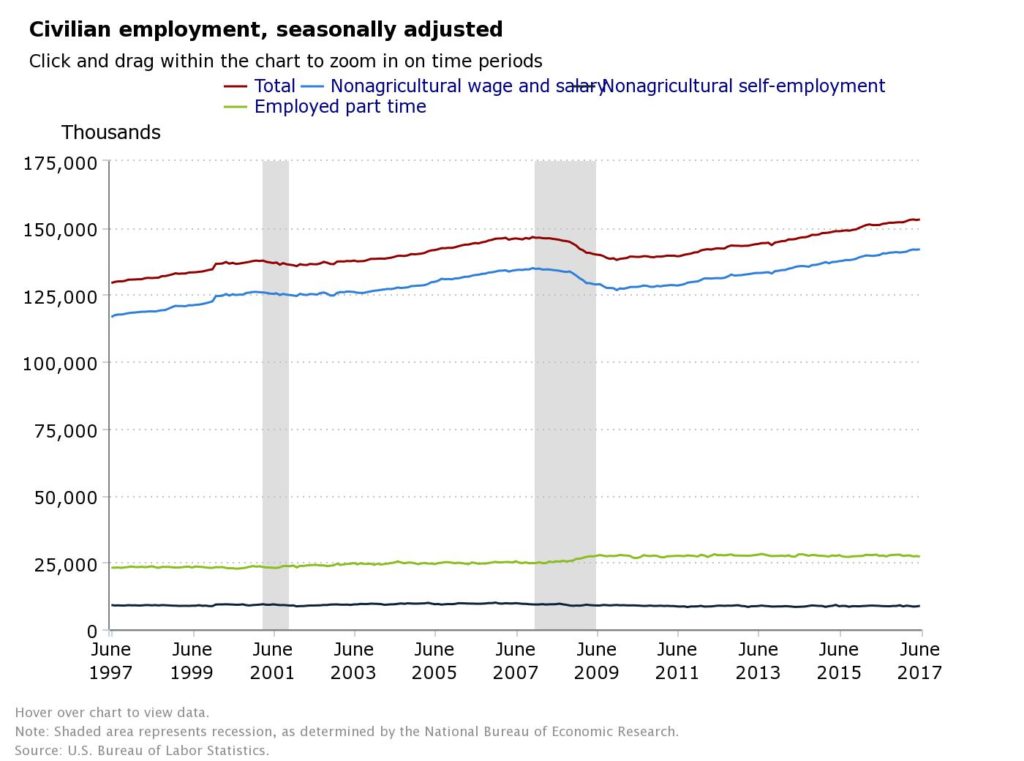
Where the Jobs Are
There were plenty of high-paying jobs added in the professional and business services (+35,000) and financial services (+17,000) sectors. Both sectors have seen strong growth over the past year; professional and business services jobs have grown by 624,000 and jobs in securities, commodity contracts, and investments have grown by 169,000.
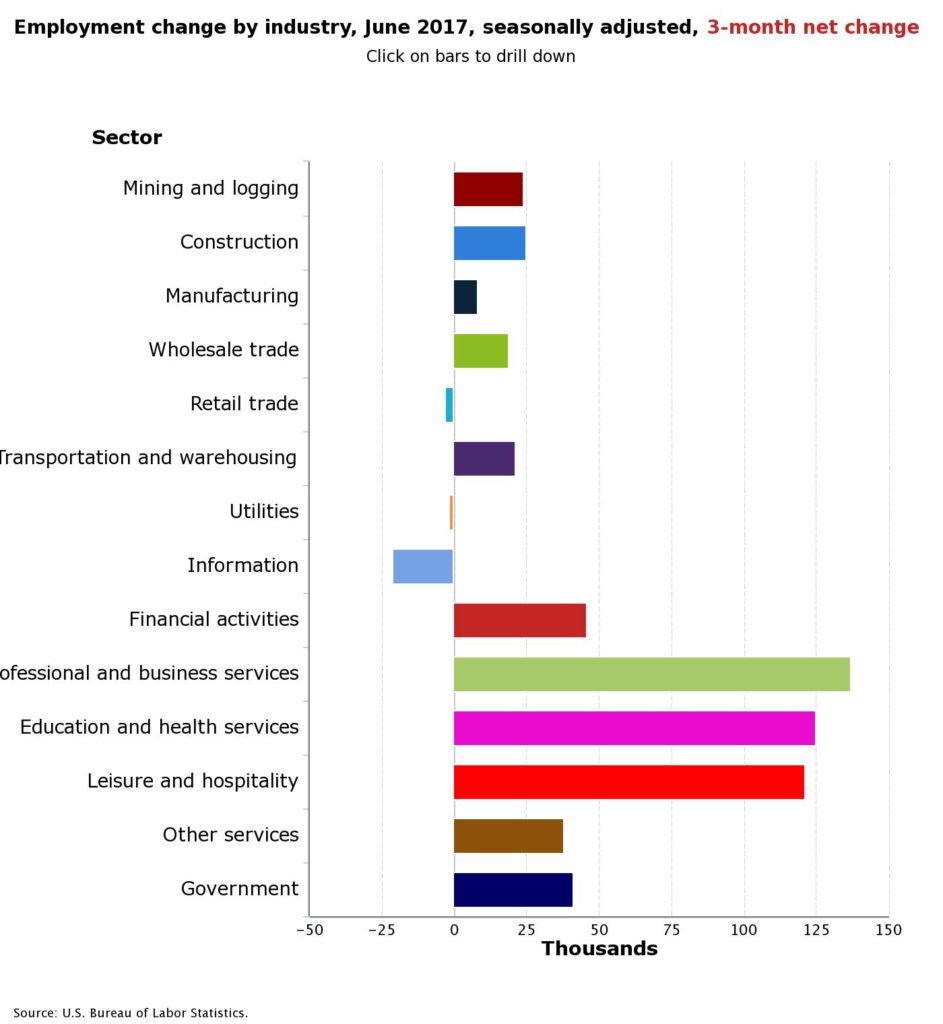
In lower-paying, unskilled jobs, employment in food services and drinking places continued on an upward trend in June (+29,000).
“Hires in the food sector were robust, suggesting that automation may be slower to replace workers than some have expected,” according to economist Diane Swonk, Founder and CEO of DS Economics in Chicago. The industry has added 277,000 jobs over the year.
Employment in other major industries, including wholesale trade, retail trade, transportation and warehousing, and information showed little change over the month.
The Unemployed and Underemployed
Seven-million Americans are out of work and looking for a job, little changed from May, according to the Labor Department report.
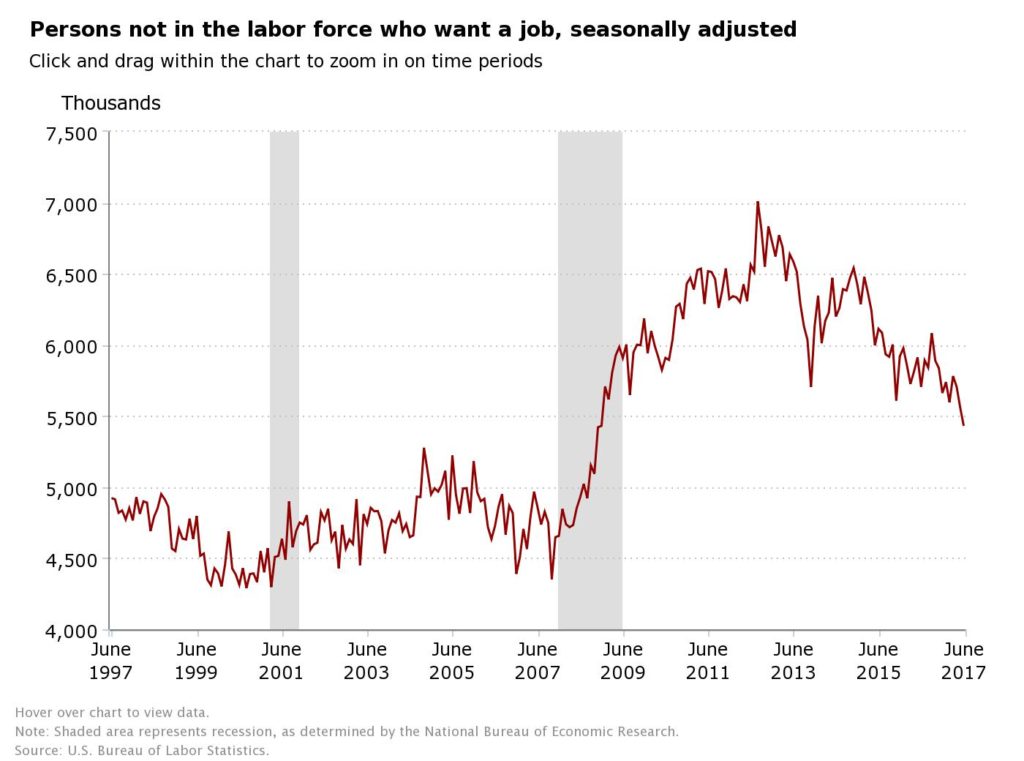
Weak Wage Growth
“The only modest blemish in the (June) report”, according to Mark Zandi, Chief Economist for Moody’s Analytics in Philadelphia, “is that wage growth remains tepid.” Year-over-year, wage growth was up just 2.5%. Zandi attributes that to the aging workforce.
“Older workers tend to get smaller pay increases than younger workers, as they are less likely to move jobs in search of higher pay,” says Zandi, “and they are no longer getting promoted into higher-paying jobs.” DS Economics’ Swonk agrees and adds that “part of the problem is the composition of employment growth, as we have seen a jump in low-wage, food-service jobs.”
Job Insecurity
There is no doubt that the U.S. economy has made great strides in creating jobs and making Americans more financially secure in the eight years since the recession ended. Still, not everyone who has a job feels secure. According to a study released in May by the Federal Reserve, about 30% of Americans say they are “either finding it difficult to get by or are just getting by financially” despite being employed.
That’s 73 million Americans, many of whom have a high school degree or less.
And for those still looking for work, that insecurity can be even more anxiety-provoking. Employers are getting more and more specific about what expertise and skills they want for their posted jobs. Moody’s Mark Zandi sees a tight job market getting tighter. “Businesses’ number one problem is quickly becoming a lack of qualified workers. There is already a record number of open job positions”, according to Zandi. The Labor Department puts that number at six million around the country.
Filling the Need
So how do the people looking for work get the training and expertise that employers are demanding? The Brookings Institute says it depends on where you live and what local programs are available to you.
“Effective workforce programs offer training that aligns with regional labor market needs and provide guidance, counseling, and other appropriate supportive services to participants,” according to the study authors.
These programs help prepare the undereducated through occupational skills training, those with limited experience through short-term subsidized jobs, and apprenticeships that combine paid employment with on-the-job training and related classroom instruction.
The report says, in the long-run, “it’s the mayors, county executives, employers, community-based leaders, and other stakeholder who have to execute the plans to get their constituents, students, and community members to work.”
Join the Conversation: Tell us what you think about the latest jobs numbers from the BLS on our Facebook page.
Follow Ramona on Twitter (@RamonaWritesLA) and connect to her through her website and LinkedIn.

